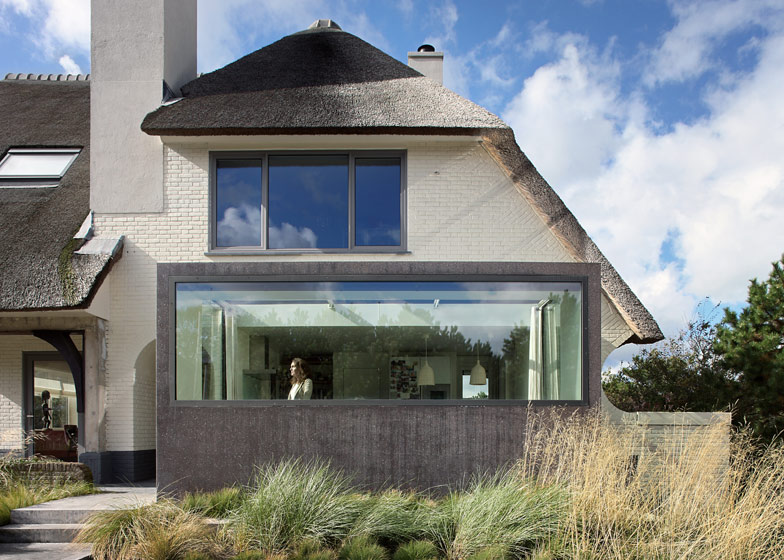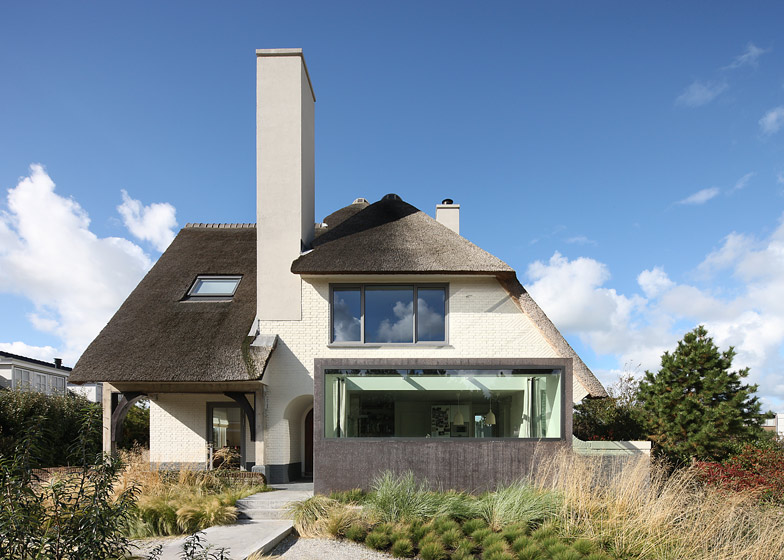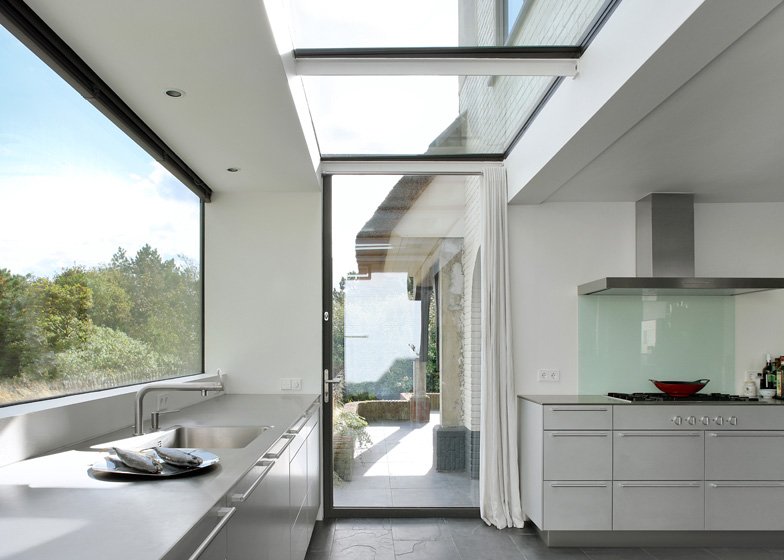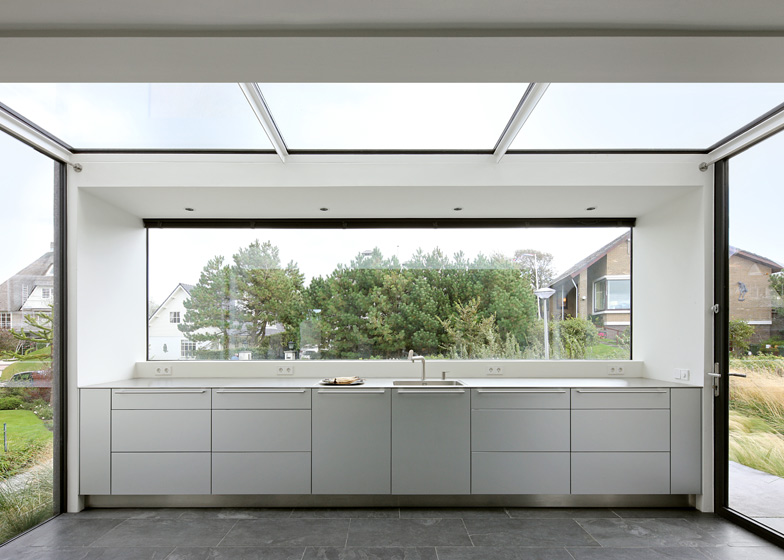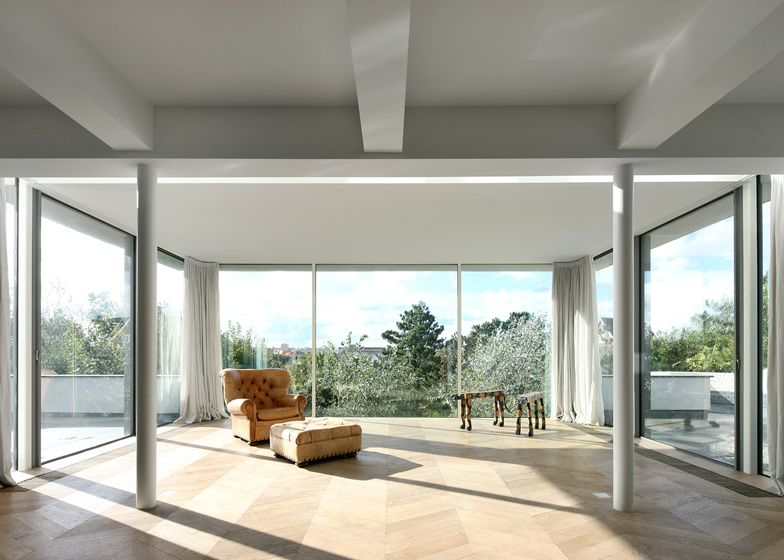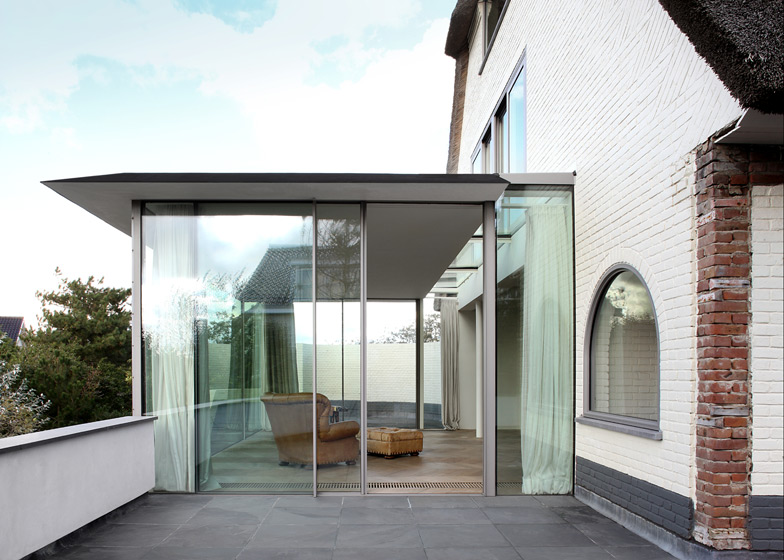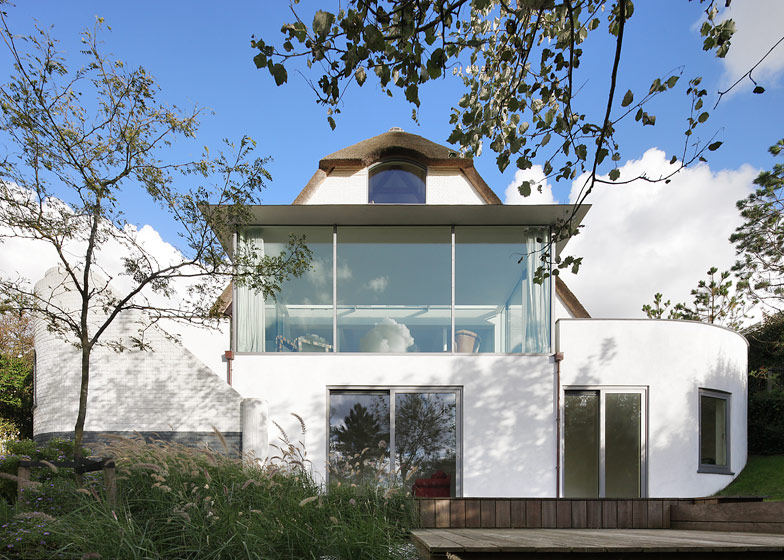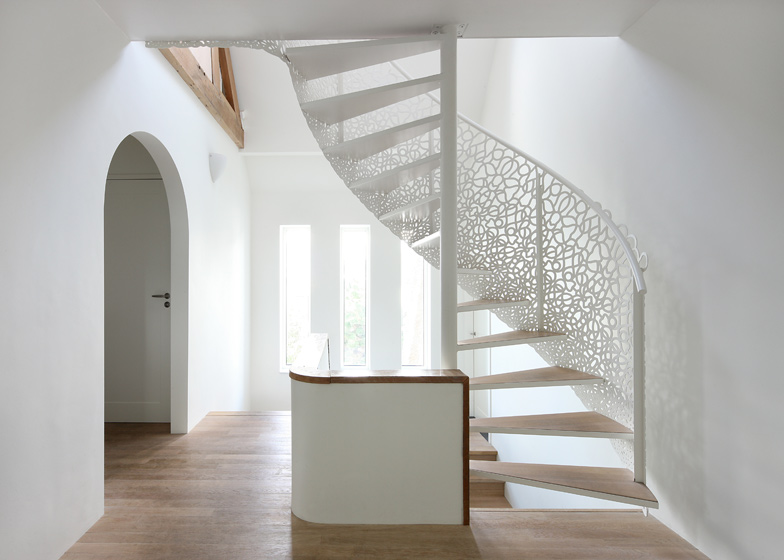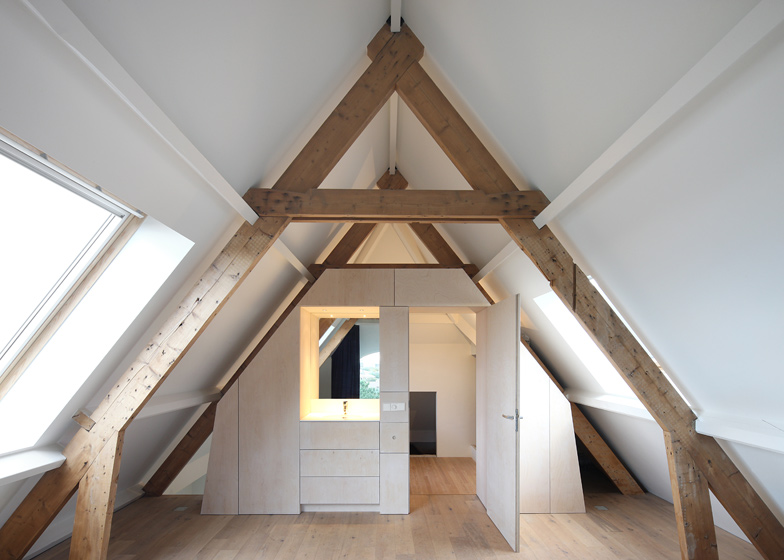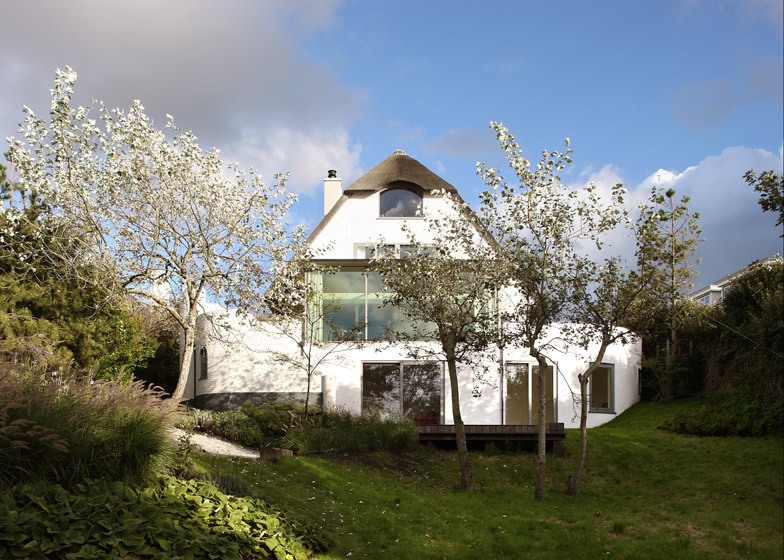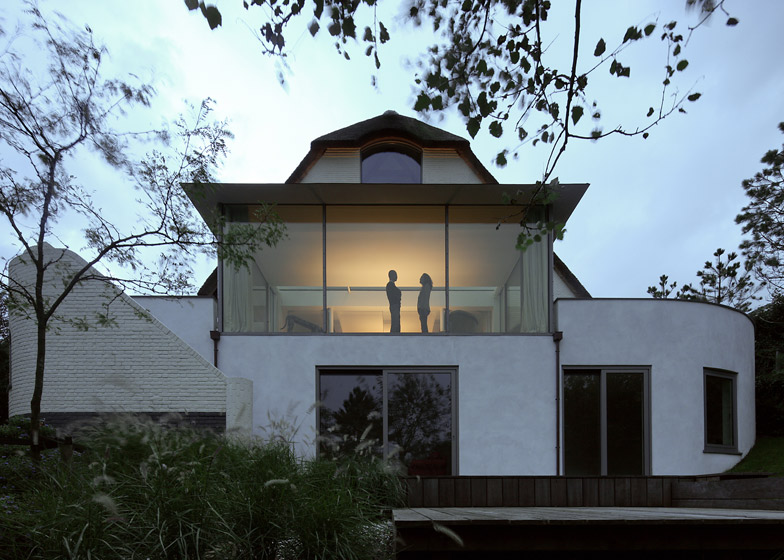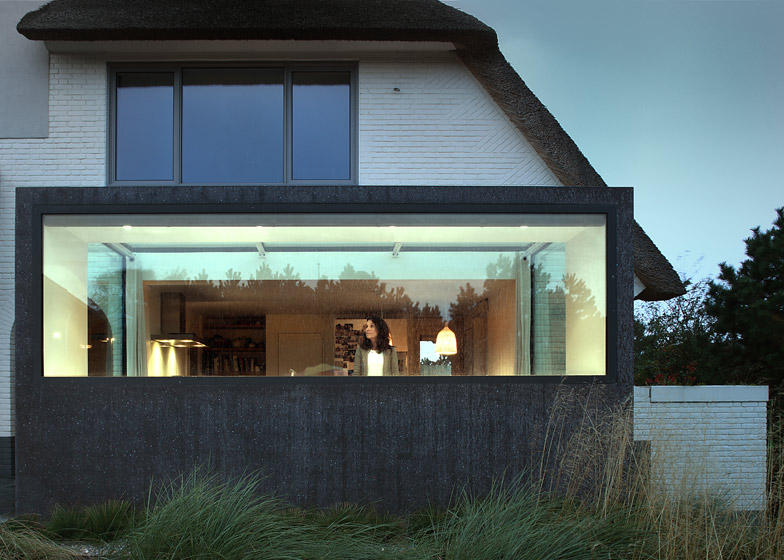Dutch studio Maxwan has renovated a thatched house in the seaside town of Noordwijk in the Netherlands and added concrete and glass protrusions to the front and back (+ slideshow).
Named House N, the residence dates back to the 1930s and had become run down over the years, so Maxwan was brought in to repair the existing structure and create more room on the ground floor.
The architects added two extensions to the house. The first is a precast concrete block that stretches the kitchen out beyond the facade, while the second is a glazed box at the rear that extends the living room into the garden.
"We wanted the extension of the kitchen to read as one monolithic object, almost like a sculpture or a piece of street furniture," Maxwan's Jason Hilgefort told Dezeen.
Strips of glazing across the roof of each extension create a visible separation between the old and new structures.
To create a new route up to the second-floor attic, the architects installed a spiral staircase with a custom-designed filigree balustrade.
"This historic lace-like pattern traditionally would have to be repeated to be formed, but this was fabricated with a metal laser cutter," explained Hilgefort. "Therefore, the pattern could do things traditionally not possible, which is why we chose to warp it in places."
"An additional feature of the lace pattern is that it is structural. This is why the pattern is more dense at the tread level, but has a more open transparency along the handrail."
Bedrooms, bathrooms and the basement in the house are also renovated, plus the thatched roof is restored.
Other residential extensions completed in the last year include a barrel-vaulted addition to an English farmhouse and a dark brick extension to a red brick house in France. See more house extensions on Dezeen.
Photography is by Filip Dujardin.
Here's a project description from Maxwan:
House N
Extension to a seaside villa
Noordwijk, 2012
Built in 1938, this Noordwijk seaside villa was originally the holiday home of a concrete factory owner. Battered and blustered by the salty sea weather over the decades, the house was in need of renovation.
Besides roof replacement and basement repairs, the bedrooms, bathrooms and windows were outdated and some spaces had grown too small for the clients' requirements. Maxwan's additions bring new distinctive features to the house, while respecting its original character.
Extending into the back garden with floor-to-ceiling glass on three sides is the new living room, which maximizes light and views from among the treetops towards the garden and further out to the sea.
In the opposite direction stretches the new kitchen, incorporated in a single precast concrete block. Its color contrasts to the existing house while harmonizing with the surroundings.
Both extensions of the new kitchen and living room are clearly separated from the existing structure with glass slits, through which the sky dramatically bursts.
The bespoke spiral staircase connecting the uppermost levels elegantly uses the balustrade to support the treads, with the laser-cut pattern blending from closed to open for structural efficiency and recalling the breaking waves. The attic is given a new lease of life by new multi-functional wall furniture and large windows.
In addition to these major components, the entire house is renewed in a manner complementary to the original house.
Above: concept diagram - click for larger image
Client: private
Country: Netherlands
City: Noordwijk
Scale: S
Team leader: Rene Sangers
Partner in charge: Hiroki Matsuura
Team: Anna Borzyszkowska, Larraine Henning, Jason Hilgefort, Claudia Strahl
Collaborators: F. Wiggers - Varsseveld (structural engineer)
Above: site plan - click for larger image
Above: ground floor plan - click for larger image
Above: first floor plan - click for larger image
Above: second floor plan - click for larger image
Above: cross section - click for larger image

